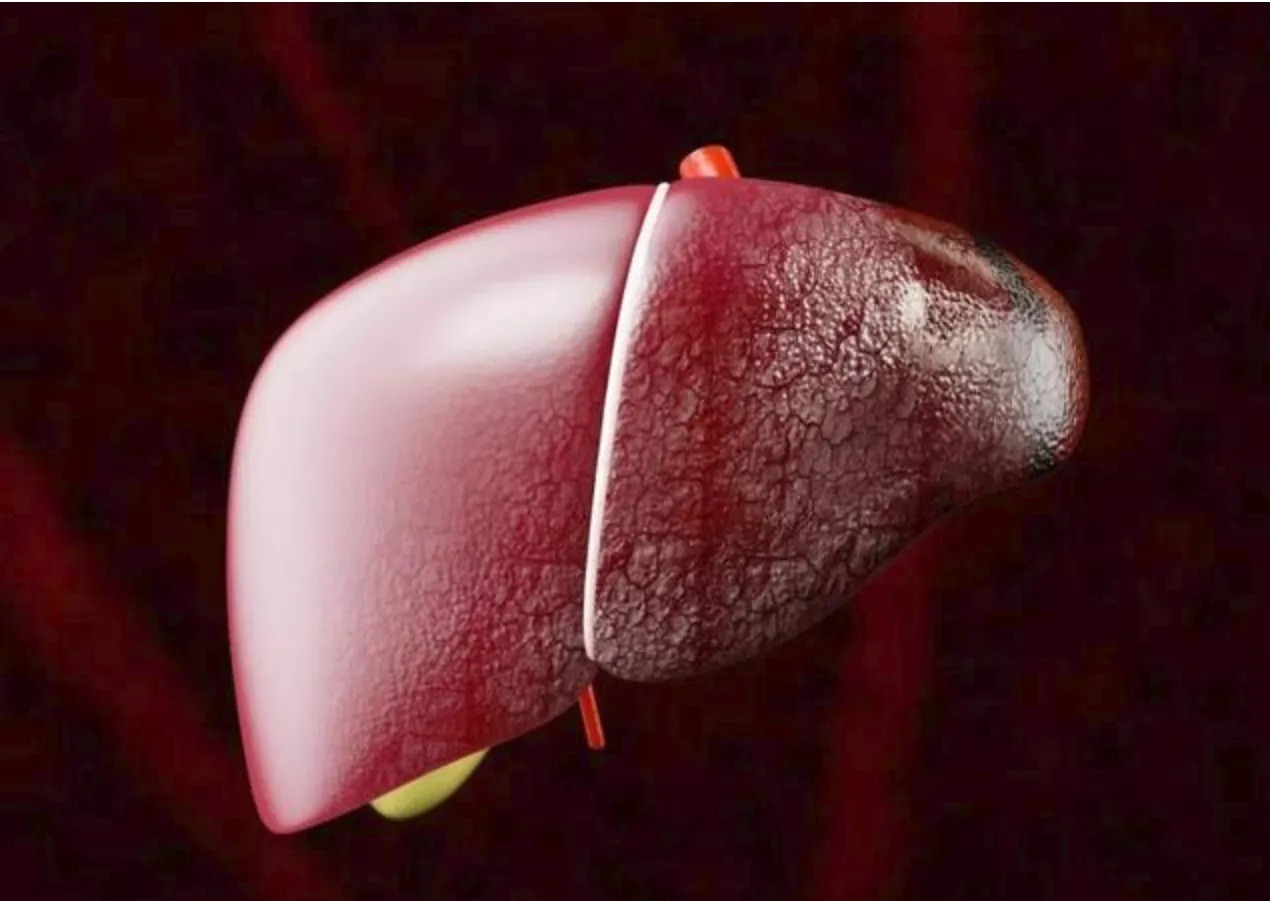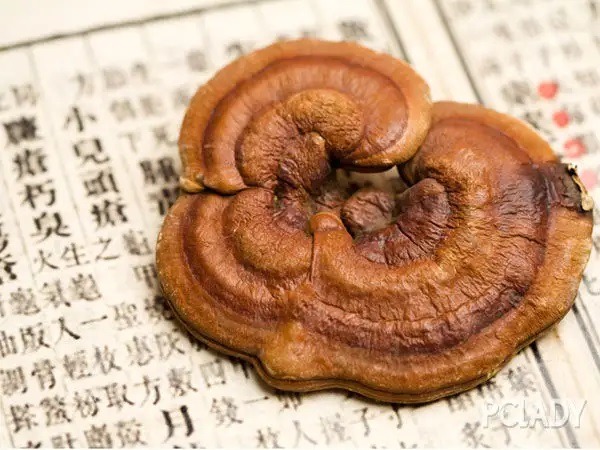Reishi mushroom, Ganoderma lucidum, is a well-known Chinese crude drug used clinically in China. The fruit bodies are used for treating neurasthenia, deficiency fatigue, insomnia, bronchial cough in older adults, and carcinoma.
Many studies have indicated that water or ethanol extracts of G. lucidum showed protective actions against acute hepatitis in rats or mice. Other reports had previously indicated that triterpenoids from G. lucidum possessed a protective effect against acute hepatitis caused by carbon tetrachloride (CCl4). Furthermore, polysaccharides extracted from G. lucidum could antagonize liver fibrosis induced by biliary obstruction. These results demonstrate that G. lucidum possesses a protective effect in the liver.
 Liver fibrosis is the common end-stage of most chronic liver diseases, regardless of etiology, and its progression leads to cirrhosis and liver cancer. Although the exact mechanisms of pathogenesis in liver cirrhosis are still obscure, the role of free radicals and lipid peroxides has attracted considerable attention. It has been found that the metabolism of CCl4 involves the production of free radicals through its activation by drug-metabolizing enzymes in the endoplasmic reticulum. CCl4 is capable of causing liver lipid peroxidation, resulting in liver fibrosis.
Liver fibrosis is the common end-stage of most chronic liver diseases, regardless of etiology, and its progression leads to cirrhosis and liver cancer. Although the exact mechanisms of pathogenesis in liver cirrhosis are still obscure, the role of free radicals and lipid peroxides has attracted considerable attention. It has been found that the metabolism of CCl4 involves the production of free radicals through its activation by drug-metabolizing enzymes in the endoplasmic reticulum. CCl4 is capable of causing liver lipid peroxidation, resulting in liver fibrosis.
Data from in vitro and in vivo studies have indicated that G. lucidium has potent antioxidative and radical-scavenging effects, which contribute to hepatoprotection. Nevertheless, to our knowledge, no reports have recorded the impact of G. lucidium on chronic hepatitis. In the present study, we investigated the effect of extracts of G. lucidum on chronic CCl4-induced liver fibrosis.
The present study revealed the beneficial effect of Ganoderma lucidum extract (GLE) in preventing liver fibrosis induced by CCl4 treatment. An improvement brought about by GLE was also seen in plasma biochemical parameters.
CCl4 treatment caused hepatocellular damage in rats, as indicated by a drastic increase in plasma ALT and AST levels after CCl4 administration. Rats treated with GLE protected against CCl4-induced hepatotoxicity, with the levels of both plasma AST and ALT being reduced.
It is well known that adenosylmethionine-dependent methylation is central to many biological processes. Methionine adenosyltransferase (MAT) is a key enzyme for liver methionine metabolism, catalyzing S-adenosylmethionine synthesis. In mammalian tissue, three different forms of MAT (MAT I/III and MAT II) have been identified, which are the product of two other genes (MAT1A and MAT2A). MAT1A is primarily restricted to the adult liver. MAT2A is high in the fetal liver, decays at birth to negligible levels, and, in the adult liver, increases during regeneration after partial hepatectomy.
Thus, MAT1A expression is off in response to liver injury, and MAT2A expression is on. Consistent with this, the expression of MAT1A was found to be reduced in the livers of rats with chronic CCl4 injury, whereas the expression of MAT2A increased. In this study, we also found that the changes in MAT expression in chronic CCl4-injured rats were reduced by GLE treatment. These results further support the fact that GLE possesses a hepatoprotective effect.
The liver synthesizes not only the protein it needs but also produces numerous export proteins. Among the latter, plasma albumin is the most important. Export proteins are synthesized on polyribosomes bound to the rough endoplasmic reticulum of the hepatocytes. In contrast, protein destined for intracellular use is synthesized on free polyribosomes rather than bound polyribosomes.
In this experiment, CCl4 induced liver fibrosis in rats, and it appeared to cause a decrease in both hepatic protein and plasma albumin contents. GLE reduced the decline in protein content in the liver and albumin content in the plasma; thus, it was shown to alleviate the reduction in liver synthesis function caused by CCl4-induced fibrosis.
Immunocytes synthesize immunoglobulin, and hyperglobulinemia is found in hepatocellular disorders, appearing as an inflammatory reaction of the liver. In the present experiments, we observed CCl4-induced chronic liver lesions in rats and a decrease in the A/G ratio. GLE could reduce the A/G ratio caused by CCl4, thereby exhibiting suppressive actions on liver inflammation caused by CCl4.
It is known that liver fibrosis results from increased collagen synthesis; hydroxyproline is the characteristic component of collagen. The amount of collagen can be reflected by determining hydroxyproline concentration and can be used to express the extent of fibrosis.
In this experiment, when CCl4 was administered to induce liver fibrosis, the hydroxyproline contents in the liver increased. Interestingly, GLE could reduce hydroxyproline concentration, indicating that it could lessen the actions of hepatic fibrosis caused by CCl4, which was further proved by histopathological inspection.
When the liver is damaged, it can initiate regenerative actions, thus increasing the weight of the liver. However, liver fibrosis and cirrhosis appear if it was heavily damaged, resulting in liver atrophy. Therefore, the change in the wight of the liver can not directly predict the pathological process in chronic liver injuries.e
Liver fibrosis leads to blockage of blood flow into the liver and causes portal hypertension. It also influences blood flow to the spleen and gives rise to splenomegaly. In this study, CCl4 induced chronic hepatic fibrosis and splenomegaly, but GLE could improve splenomegaly, indicating that GLE possesses actions in ameliorating fibrosis.
Increased free radical production and lipid peroxidation have been proposed as major cellular mechanisms involved in CCl4 hepatoxicity. Furthermore, a close relationship has been reported between lipid peroxidation and fibrogenesis in rats, in which fibrosis was induced by CCl4 administration.
Our results also confirmed that hepatic lipid peroxidation increases during hepatic fibrogenesis. Moreover, we observed that GLE inhibited CCl4-induced hepatic lipid peroxidation. These results indicated that GLE might inhibit lipid peroxidation and consequently attenuate the development of liver fibrosis. Numerous studies have shown that G. lucidum extracts are good free-radical scavengers, suggesting that the ameliorative effects of GLE on liver fibrosis induced by CCl4 are due, at least in part, to its free-radical scavenging ability.
TGF-β1 is a profibrogenic cytokine as it directly stimulates extracellular matrix production by endothelial and stellate cells. Increased levels of TGF-β1 mRNA expression have been found in patients with liver fibrosis as well as in experimental models of liver fibrosis. Blockade of TGF-β1 synthesis or signaling is a primary target for developing antifibrotic approaches, and modern hepatology has facilitated the design of drugs removing this causative agent.
In this study, CCl4 treatment increased while GLE treatment significantly reduced TGF-β1 mRNA expression, suggesting that GLE might ameliorate liver fibrosis via reducing TGF-β1 secretion.
In conclusion, oral administration of GLE effectively reduces chronic liver injury, probably via a protective effect against hepatocellular necrosis by its free-radical scavenging ability.

Leave A Comment